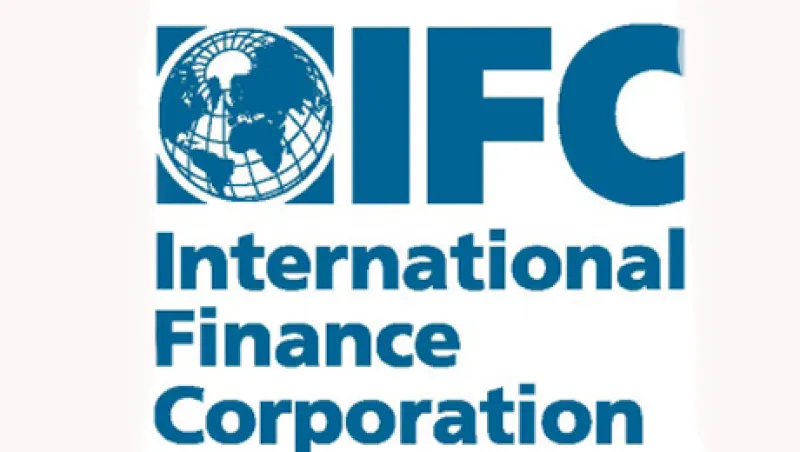Although it’s taken nearly two decades for International Finance Corp.’s private equity fund initiative for developing countries to come of age, the transformation couldn’t have come at a better time.
Interest in developing markets is soaring, spurred partly by the economic growth in countries such as China, India and Brazil. The returns have soared as well, especially when compared with the performance of comparable asset classes in developed countries. Large institutional investors ranging from the $580 billion sovereign wealth fund of Norway to New York City’s $130 billion pension fund say they are increasing their asset allocations to the developing countries.
In the 1990s, IFC, a unit of the World Bank, decided to create and seed private equity funds in developing markets to increase the flow of growth capital to small- and medium-size businesses. The reasoning was straightforward: Conditions were ripe for business growth, but without access to capital, small- and medium-size companies couldn’t participate in that growth.
IFC specializes in developing-market mandates. It boasts 180 funds and nearly $3 billion in committed capital aimed at creating new capital markets and marketplaces in developing countries. It creates new funds, establishes the marketplace, provides the principle and then lets the free market take over.
Private equity was the hot asset class of the 1990s, and firms like Kohlberg Kravis Roberts & Co., Forstmann Little & Co. and Warburg Pincus were rock stars. IFC built on the playbook they wrote and established and created some 80 funds in a number of developing countries across Asia, Africa and Latin America.
At first, the initiative was a failure. The managers, all properly vetted and experienced finance professionals, didn’t fit the job. The marketplace that IFC wanted to create seemed to professionals to be nascent and much too small, with none of the characteristics of the developed markets. Most significant, the returns that could encourage private players to participate just weren’t there.
So IFC threw away that playbook, rewrote the game plan and started over. A decade later the IFC private equity funds have, on average, returned between 18 and 19 percent, says David Wilton, IFC’s chief investment officer and head of its fund of funds. The average rate of job creation within companies backed by IFC-supported funds since 2000 is 22 percent, well in advance of regional rates of job growth of about 3 percent. Today there are funds in countries including Brazil, Colombia, India, Indonesia and Vietnam and new funds being launched in frontier countries such as Bhutan, Nepal and Sierra Leone. IFC’s private equity fund initiative has become a vital growth tool in countries where the availability of credit is constricted and the cost of capital too high to be developmentally positive.
IFC is a significant supporter of emerging managers. Since 2000, 43 percent of IFC-backed funds have been first-time funds (70 percent since 2007) and a further 56 percent have been second-time funds. Says Wilton: “We have had good results from backing first-time funds, and overall, returns on private equity fund investments since 2000 are in the top quartile of the Cambridge emerging-markets benchmark.”
The key to the transformation, according to Wilton, was the IWC’s recognition that the developing markets were different. “We hadn’t really looked at private equity business models and examined how they changed when we took them to the emerging markets,” he says. IFC also hadn’t looked closely at the marketplace itself. Was there a real need for growth capital? Were there enough deals to create a market? Was the ownership structure of these businesses conducive to private equity investing? And how would investors get their money back?
Clearly, the investment metrics had to change. That meant taking on a new set of risks. “The World Bank said to take on the risks,” says Wilton.
The riskiest change probably was moving away from top-down developed-market models, where leverage and financial engineering are key to returns, to a localized – and customized – business model. “We also recognized that a shortage of capital didn’t necessarily translate to returns,” says Wilton.
What also helped was a heightened deal flow. By the late 1990s many developing-country governments were deregulating their domestic markets, allowing for the growth and expansion of existing businesses and the entry of new players. There was also a drastic removal of barriers to trade and capital flows. In China, trade flows rose to 70 percent of GDP in 2008, up from 25 percent in 1997. In India trade flows doubled, to 50 percent of GDP in 2008, from 25 percent in 1997.
The private equity funds had to operate at the local level, partnering with business owners to help grow their companies strategically and financially. And because in almost all cases the investors held a minority stake, the need to work together was great. The process was tricky, says Wilton. As minority shareholders, the fund investors often found it difficult to enforce their shareholders’ agreements, especially when they had provided capital and little else. But with time investors have learned they need to add value – do some heavy lifting – to be recognized as true partners.
Perhaps the most significant risk factor was that IFC was creating funds in business sectors that others had ignored or didn’t dare venture into. “They pioneered the concept,” says Karthik Balakrishnan of Globescape Capital, a Washington emerging-markets consulting firm. “In addition to the capital, they also provided valuable know-how through their advisory arm.”
The know-how has been the critical element, according to Wilton. Many companies in fast-evolving economies simply don’t have road maps to follow and often need help to get to the next level. Sure, they need the capital, but they need partners more. And those funds that truly have been partners have greatly benefited from domestic growth and expansion as well as strategies to go abroad.






